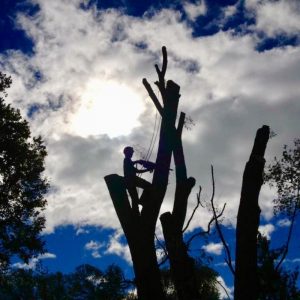- Hazard: When a tree has become a hazard it must be removed to protect person and property. Disease, age and changes to a trees environment are all factors that can negatively affect a trees vitality and stability. Trees in this category often enter a circle of decline and ultimately become a more serious hazard as time goes on.
- Culling: Crowding trees will compete for sunlight. This is called phototropism and can lead to undesirable and unstable branch unions as trees become larger. To help promote good branch structure and healthy canopies in a stand, it can be beneficial to remove undesirable specimens that have already formed poor branch unions. This will help encourage other trees to form better structure as they continue to mature.
- Aesthetic: At times a landscape may become less attractive due to poorly formed trees or overplanting/crowding. Trees that have been too closely planted to buildings/other trees, or that have been poorly selected for their location can develop poor form as well as damage neighbouring trees or property. The removal of these trees provides an opportunity to replant more desirable specimens in better suited locations.

